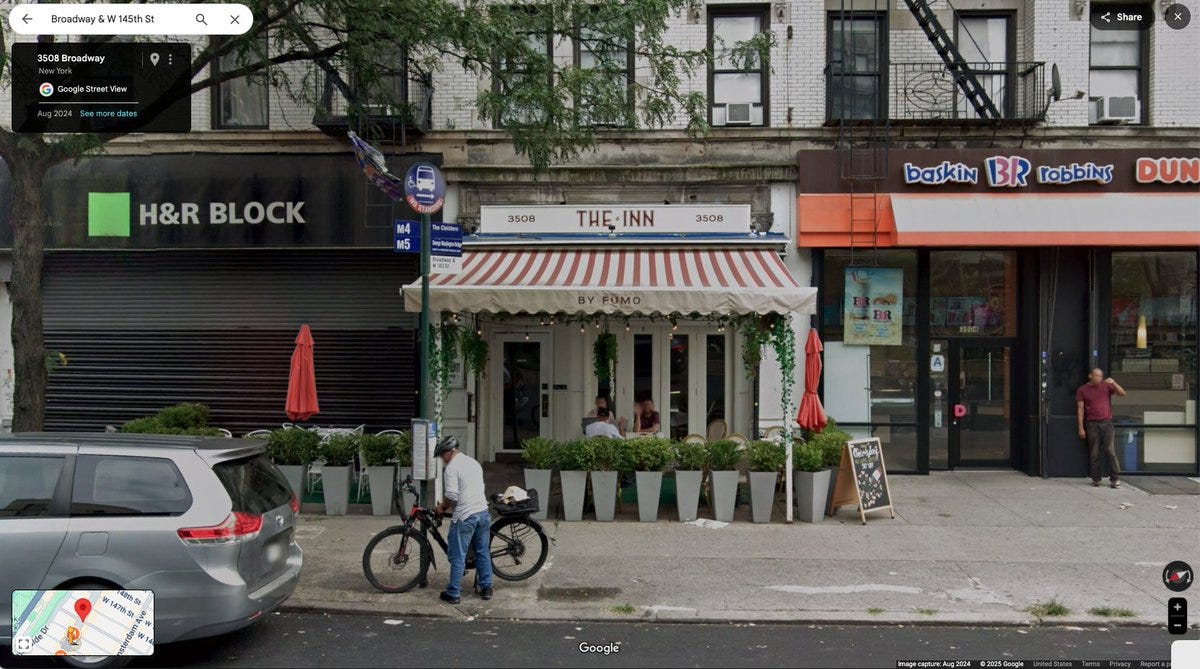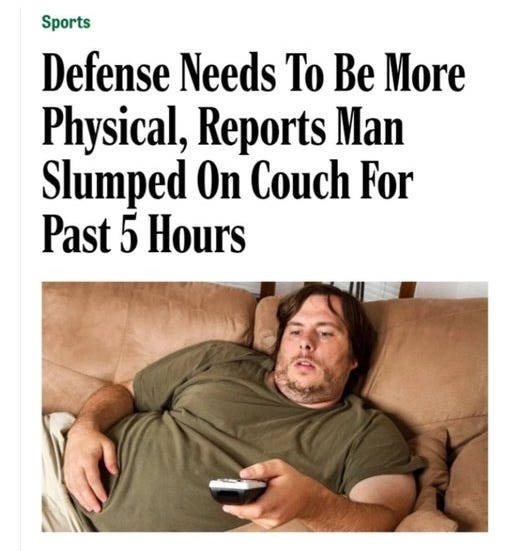Senior Drivers Not The Onion, Unsafe NYC & More
Around the College Towns: Links and commentary related to urbanism and higher ed for the week of Aug. 10 - Aug. 16.
Note: Around the College Town is my weekly links roundup article on urbanism and education. This weekly post mostly covers news that may have fallen through the cracks rather than the big events.
Senior Driving is Deadly Serious
There is a fun thread going around on X responding to the question “which Onion headline still occupies a lot of space in your mind?” It has 73 million views! The thread is worth scrolling through to see some classics.
Here were a couple that stood out for me:
Wait, that last one isn’t from The Onion, it’s a real headline and image from a newspaper (The Telegraph). The post on X even got a Community Note, saying that the legislation in the UK would require drivers over 70 to take a vision test to keep their licenses.
If someone is losing their vision, they simply should not be driving. There should not really be a debate here. The story reminds me of the NotTheOnion concept, where real headlines mirror the parody of the satire newspaper. “Dangerous Drivers Demand Right to Continue Driving Dangerously” certainly qualifies for NotTheOnion.
It is a sad but familiar story actually. So many people simply should not be driving due to lost faculties (like this senior) or just irresponsibility (like teens), yet our built environments force these dangers on the road. They can be a genuine danger to other people.
With the coming Gray Wave of Boomers, this problem will only get worse. Unfortunately, this population will rapidly lose their faculties to drive, but they find a built environment impossible to navigate without a car. Housing in walkable areas is already too expensive. Their generation will be stuck.
Perhaps self-driving cars will offer respite. But I have my doubts that the tech will become ubiquitous enough in time. This is certainly something to consider for a future post.
Links I’m Reading This Week
Education
Universities are building more modular developments. Suffolk, the company featured here, operates out of Southern California, so I hope to do a future review of their facility.
University of Chicago is going through major cuts and while some are blaming Trump, the financial difficulties run deeper than the current admin.
University of Kansas alum donated $300 million to the school to improve football team. Nice to have an alum who helped invent the index fund.
Baylor U is suing Boston U because their logos are basically the same. How many ways can you interlock a B and U?
Greystar, one of the largest student housing providers in the US, promises to stop using algorithm deemed anti-competitive. I’m not fully convinced this will bring down prices, though. A space to watch, certainly.
Butler U offering a global degree where undergrads spend most of their time abroad in different cities. It is similar to the Minerva U model. Is the future of international ed?
Urbanism
Omaha, Nebraska, just launched a micro transit service (aka public Uber). The same service recently ended where I live for being too costly. I want to do a deeper dive on these and if they can actually work long-term.
The Vegas Loop is much worse than I even realized. Review by CityNerd.
LindyMan has a new article arguing that we must consider crime when talking about housing affordability.
LA is naming a metro station after local legend rapper Nipsey Hussle, who was murdered in 2019.
Georgia Department of Transportation is considering a rail line from Atlanta to Savannah.
Internet Archive will no longer be able to crawl Reddit. (Ok, not urbanism, but certainly a blow to keeping things alive online).
Around Substack
Note: I also think it’s important to stay connected to the growing Substack community. Here are a few I am reading this week:
CityBuilder is hosting an event about a developer who broke city rules to build a development that eventually won awards from the local historical society. In a college town! I hope to attend.
However, creating a similar environment to the existing neighborhood, which was built from around 1895 to 1905, had been effectively outlawed by zoning codes by the 1990s. In order to build a dense infill neighborhood consisting of 21 single homes and 15 townhouses, in the style of the surrounding area, Bob and his team were required to get variances and exceptions to zoning codes and planning regulations, including 7 separate ordinance text amendments.
Can most Americans go car-lite? The Future Of Where tries to answer the question. It has been my goal to do so here even in suburban California.
So it doesn’t really matter if you live near a big transit stop – even if you commute using transit – if you’ve still got a car sitting in the driveway or garage that you hardly ever use. You’re essentially paying for a travel option you don’t use. Which is part of the reason people drive cars once then own them.
John Ganz at Unpopular Front writes about the nostalgia for old Japanese gadgets. He juxtaposes that nostalgia for the malingering panic against the rising power in the 1980s.
There’s also a nostalgia for the future, for a better future. Economists speak of the “Lost Decades,” so we might speak of the “Lost Future.” Japanese consumer electronics and Japanese engineering and product development in general represented a high point of 20th-century capitalist civilization and a possible next step…
Closing Time… NYC is Pretty Safe
Brett Meiselas, co-founder of the MeidasTouch Network, posted a video on X that got a lot of heat this week: “Incredibly funny and sad how scared the average MAGA is of American cities.”
This was a response to the recent discussion on crime in US cities. I do think, in general, Progressives are a bit too flippant on street degradation in major cities. But at the same time, Conservatives often overinflate fears of cities. Both things can be true.
What is certainly true is that New York City is one of the safer cities in the country. The 1980s were a long time ago. And some spikes after 2020 have been subdued, in part due to increased police presence, which I noted in a past article recounting a trip back (Even the New York Times admitted this recently).
But some still cannot accept this about NYC. One response that I found funny came from a journalist who had this to say (not linking to avoid pile-on effect:
Why do I find this funny? Well, I used to live on that very street when I first moved to NYC for grad school, 144th and Broadway, right next to the 1. Even then, it was being heavily gentrified with new brew pubs and other hipster joints.

Don’t get me wrong, there are streets somewhere in the city that are not safe at night. This is not one of them. The area is full of Columbia students because the university has been gobbling up property to connect the Medical school on 168th down to the main campus on 116th. It brings constant consternation from the neighbors who view the development as pushing them out (that’s for a future post).
The point is, we have to be realistic about our cities. Yes, we should clean up the street degradation. No, they aren’t all post-apocalyptic hellscapes, especially NYC.











